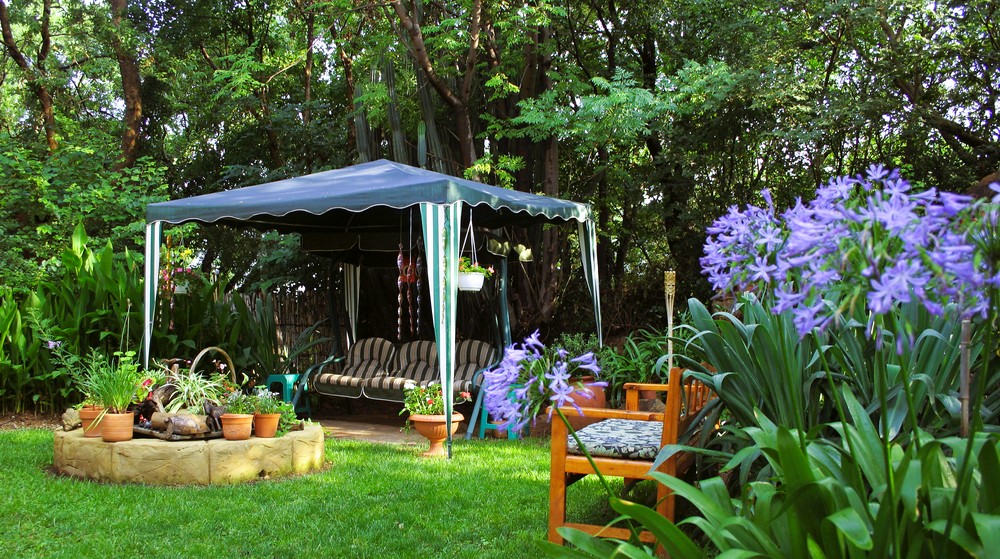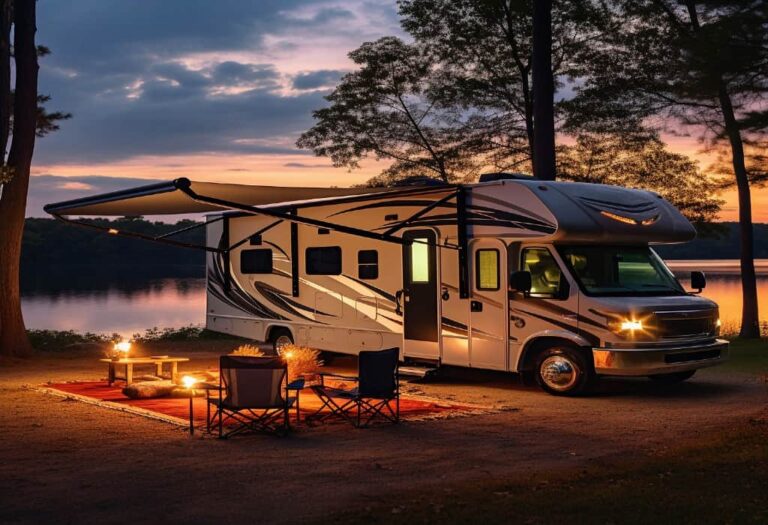Secure the Gazebo on Grass Without Concrete

When you’re planning to secure your gazebo on grass without using concrete, it’s crucial to start by evaluating the site thoroughly. It would be best to consider the area’s level and drainage and any potential hazards, such as rocks or uneven terrain, that might impact stability. You’ll also need to choose the proper anchors that are compatible with your soil type and capable of withstanding local weather conditions. However, a critical step is often overlooked, which can significantly influence the long-term stability of your gazebo. Let’s explore what that is.
Assessing Your Gazebo Site
Before establishing your gazebo, ensure the grass site is level and has good drainage to maintain stability. Installing a gazebo on grass requires importance, as uneven ground can lead to structural issues or pooling water that might undermine the integrity of your beautiful outdoor space.
After leveling the site, you’ll want to clear it of rocks, grass clumps, and other debris to create a solid foundation for anchoring.
It’s vital to ponder how you’ll secure your gazebo against wind gusts. While the specifics of anchoring methods will be explored later, it’s important to comprehend that inadequate anchoring can result in your gazebo becoming unstable or even airborne during strong winds.
Hence, part of evaluating your site involves envisioning the distribution of weight and the potential force of wind on your structure.
Choosing the Right Anchors
When selecting the proper anchors for your gazebo, consider the type of soil and weather conditions to guarantee stability and durability. To ensure a firm hold, you’ll opt for ground anchors with helices ranging from 8 to 17 inches, especially in areas with loose soil. The larger helices provide more surface area, making them ideal for maintaining the integrity of your outdoor living space against strong winds and shifting grounds.
For permanent structures like a gazebo, screw piles might be your best bet. These are installed deep into stable soil, offering long-lasting support essential for safety and longevity. Make sure that these anchors are engineered precisely to prevent any movement of your gazebo, enhancing both functionality and peace of mind.
Additionally, consider using anchor straps to secure your gazebo further. These straps can be connected to large planters, adding stability and aesthetic value to your setup. This method doubles as a decorative and practical solution, integrating seamlessly with the rest of your outdoor decor while reinforcing the gazebo’s position against unpredictable elements.
With the right anchoring strategy, you’ll enjoy a steadfast, stylish outdoor retreat.
Anchor Installation Steps
Start by clearing the installation area of any grass, rocks, and debris to establish a stable foundation for your gazebo. A clean and even surface is important for effective anchor installation.
Next, you must choose the anchors best suited for your outdoor structure. Depending on your specific needs and soil conditions, ground anchors, stakes, or weighted bags are all viable options.
Once you’ve selected the appropriate type of anchor, it’s time to begin the installation process. If you’re using ground anchors or stakes, position them at each gazebo corner. Ensure they’re evenly spaced to optimize weight distribution and enhance the gazebo’s stability.
Drive the stakes or screw the anchors deep into the ground until they’re firmly secured. This depth is essential to resist the uplift and lateral forces that might act on your gazebo during windy conditions.
Those opting for sandbag anchors should fill the bags with sand or gravel and place them over each leg of the gazebo. Ensure the bags are sufficiently heavy and evenly distributed to maintain a stable foundation and prevent shifting.
Regularly check and adjust your anchors to ensure they continue to hold securely, keeping your gazebo stable throughout its use.
Enhancing Gazebo Stability
How can you further enhance the stability of your gazebo on grass? In the face of strong winds, it’s crucial to ensure your gazebo remains steadfast. One effective strategy is to distribute weight evenly around your gazebo base. This minimizes the pressure on the grass beneath and helps maintain a balanced structure that resists tipping or swaying.
To fortify your setup, consider using sandbags or specially designed garden anchors. These accessories help keep the gazebo grounded, adding substantial weight that anchors it during unpredictable weather. Place these weights strategically at all corners of the pavilion and, if possible, along each side to optimize stability.
For those seeking a more permanent solution without concrete, consider using planters filled with concrete or heavy stones around your gazebo. These not only serve as functional weights but also enhance the aesthetic appeal of the gazebo area.
Regular inspection and adjustment of these anchoring methods are essential to ensure their effectiveness over time. By following these steps, you’ll ensure that your gazebo is a safe and stable haven regardless of the weather conditions.
Maintenance and Safety Tips
After confirming your gazebo’s initial stability, it’s important to regularly check and maintain its anchoring systems to keep it safe and secure. You’ll want to inspect anchor straps, spikes, or sandbags for any signs of wear and tear. This step is vital to maintaining the gazebo’s stability, especially if you want to enjoy a beautiful outdoor setting without worries.
Assess the weight distribution periodically to avoid undue strain on any part of the gazebo without damaging the grass below. This proactive approach prevents the formation of stagnant water and preserves the overall health of your lawn.
Adjust your anchoring methods based on changing weather conditions. After a storm or strong winds, double-check that tent pegs or garden anchors are still securely in place. This isn’t just about upkeep—it’s about ensuring your safety and your guests.
Lastly, always adhere to the manufacturer’s recommendations for anchoring and maintaining your gazebo. They often offer insights that enhance the longevity and safety of your structure.
Frequently Asked Questions
How to Anchor a Gazebo Without Concrete?
You’ll need to use ground anchors, stakes, or weighted bags to anchor a gazebo without concrete. These guarantee stability and prevent movement, even in windy conditions, maintaining your gazebo’s security and integrity.
Can I Put a Gazebo Directly on the Grass?
Yes, you can place your gazebo directly on the grass. However, to guarantee stability and prevent damage to the grass underneath during installation and use, opt for ground anchors, tent pegs, or weighted bags.
How Do I Keep My Outdoor Gazebo From Blowing Away?
Anchor your gazebo with ground stakes, weighted bags, or secure tie-downs to prevent it from blowing away. Regularly check these fixtures, especially before expected high winds, to ensure they’re tight and effective.
How Do I Secure My Gazebo in My Yard?
To secure your gazebo, use ground anchors or stakes for firm placement. Add weight with sandbags on each leg. Ensure you’ve tightened all connections to prevent movement during windy conditions.
Conclusion
Now that you’ve mastered securing your gazebo without concrete, you can relax and enjoy your outdoor sanctuary.
Remember, it’s important to pick and install the anchors properly.
Remember to check and maintain the stability of your gazebo periodically.
Following these simple steps guarantees that your gazebo is strong against the elements and provides a safe and enjoyable environment for all your outdoor activities.





